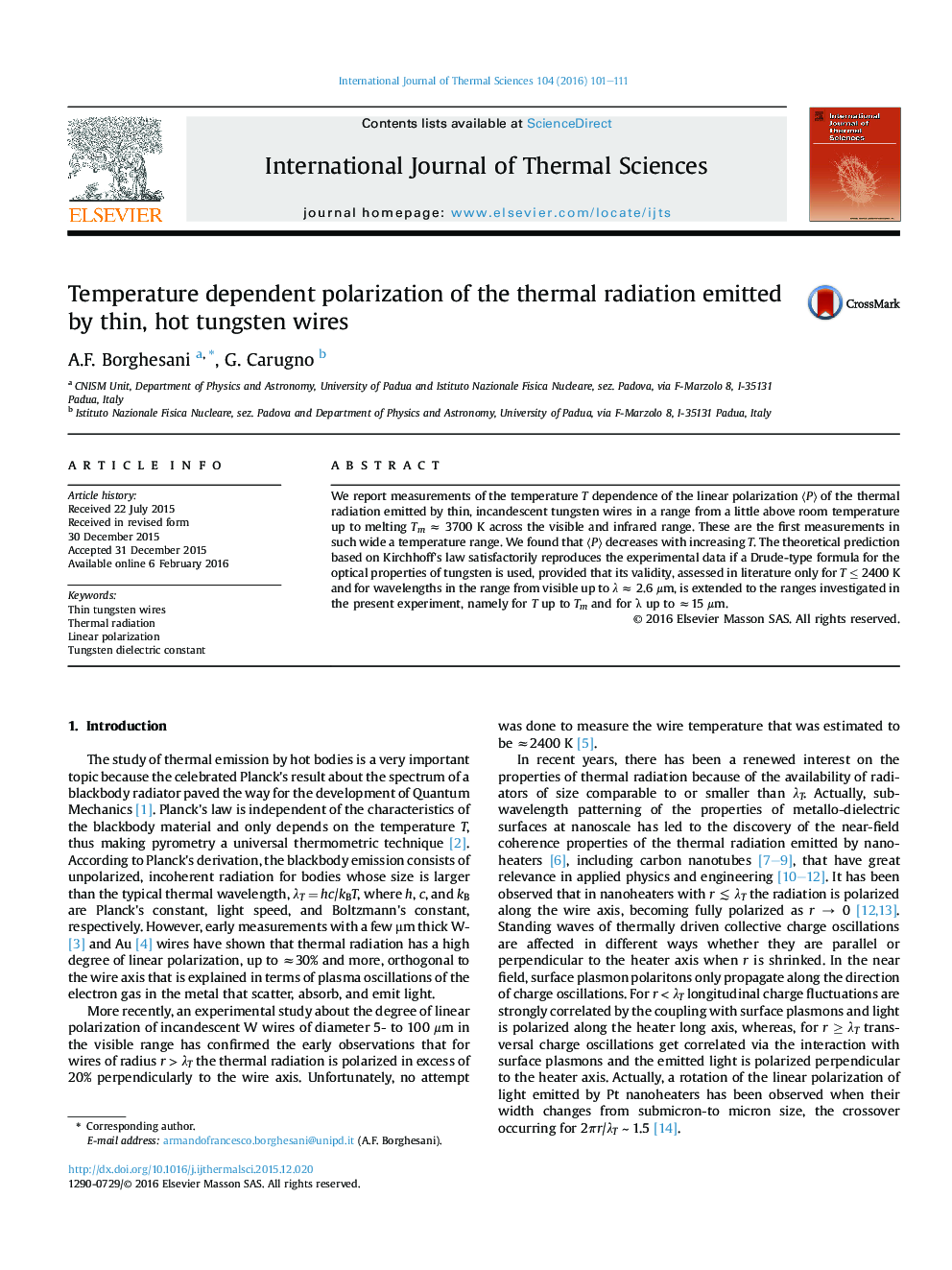| Article ID | Journal | Published Year | Pages | File Type |
|---|---|---|---|---|
| 667870 | International Journal of Thermal Sciences | 2016 | 11 Pages |
•The thermal radiation emitted by thin tungsten wires is polarized perpendicular to their axis.•The polarization decreases with temperature increasing from room temperature to melting.•The temperature dependence of polarization is described by the theory of light scattering.•The validity range of the Drude–Lorentz formula for the dielectric constant of tungsten is extended.
We report measurements of the temperature T dependence of the linear polarization 〈P〉 of the thermal radiation emitted by thin, incandescent tungsten wires in a range from a little above room temperature up to melting Tm ≈ 3700 K across the visible and infrared range. These are the first measurements in such wide a temperature range. We found that 〈P〉 decreases with increasing T. The theoretical prediction based on Kirchhoff's law satisfactorily reproduces the experimental data if a Drude-type formula for the optical properties of tungsten is used, provided that its validity, assessed in literature only for T ≤ 2400 K and for wavelengths in the range from visible up to λ ≈ 2.6 μm, is extended to the ranges investigated in the present experiment, namely for T up to Tm and for λ up to ≈15 μm.
Graphical abstractFigure optionsDownload full-size imageDownload as PowerPoint slide
